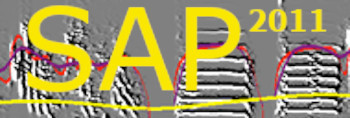Introduction to live analysis
| < PREVIOUS: Recording vocal sounds | > NEXT: The main window |
|
|
|
|
|
|
|
The automated sound recognition system A brief review of the Recording & Live processing functionality
Automated animal-voice recognition makes it possible to record and analyse an entire song development. Here is the vocalization detecting algorithm. Steps 1-2 take place at the Recorder, and the rest takes place at the processing live module.
_
1. The Recorder captures sounds from an audio channel into a memory ring buffer. It examines sound amplitude in real-time, and if the amplitude is higher then background noise level, a recording session starts (including the pre-trigger ring buffer). Recording to a temporary wave file continues until sound amplitude is below threshold for a certain duration (1s by default). During the session the recorder counts the number of peaks in the waveform the passed an amplitude threshold.
_
2. Once a recording session has ended, the recorder decides if to save the file based on the number of peak amplitude events that passed the threshold during the recording. The wave file is then either moved to the stage 1 folder, or deleted. The stage 1 folder is the input folder of the Sound Processing Live module.
_
3. The ‘Sound Processing Live’ application now reads the sound files from the stage 1 folder. It was separated from the recorder to enhance recording stability (usually ensuring that recording will persist no matter what happened during the later stages of analysis).
_
4. Multi taper spectral analysis is performed over the entire sound file, and song features are calculated.
_
5. The sound is segmented into syllables and bouts units.
_
6. A final decision if to accept of reject the sound is made based on the number of syllable, their duration, and the bout duration.
_
7. If sound was rejected, the file is deleted.
_
8. Otherwise, the module saves all or some of the following:
- The wave file (under a new name)
- A table of syllable features
- A table of raw features (every 1ms)
Based on this analysis (that occurs about 10-20 times faster than the real-time progression of the sound) SAP2011 decides whether to save the sound or not.
|
|
